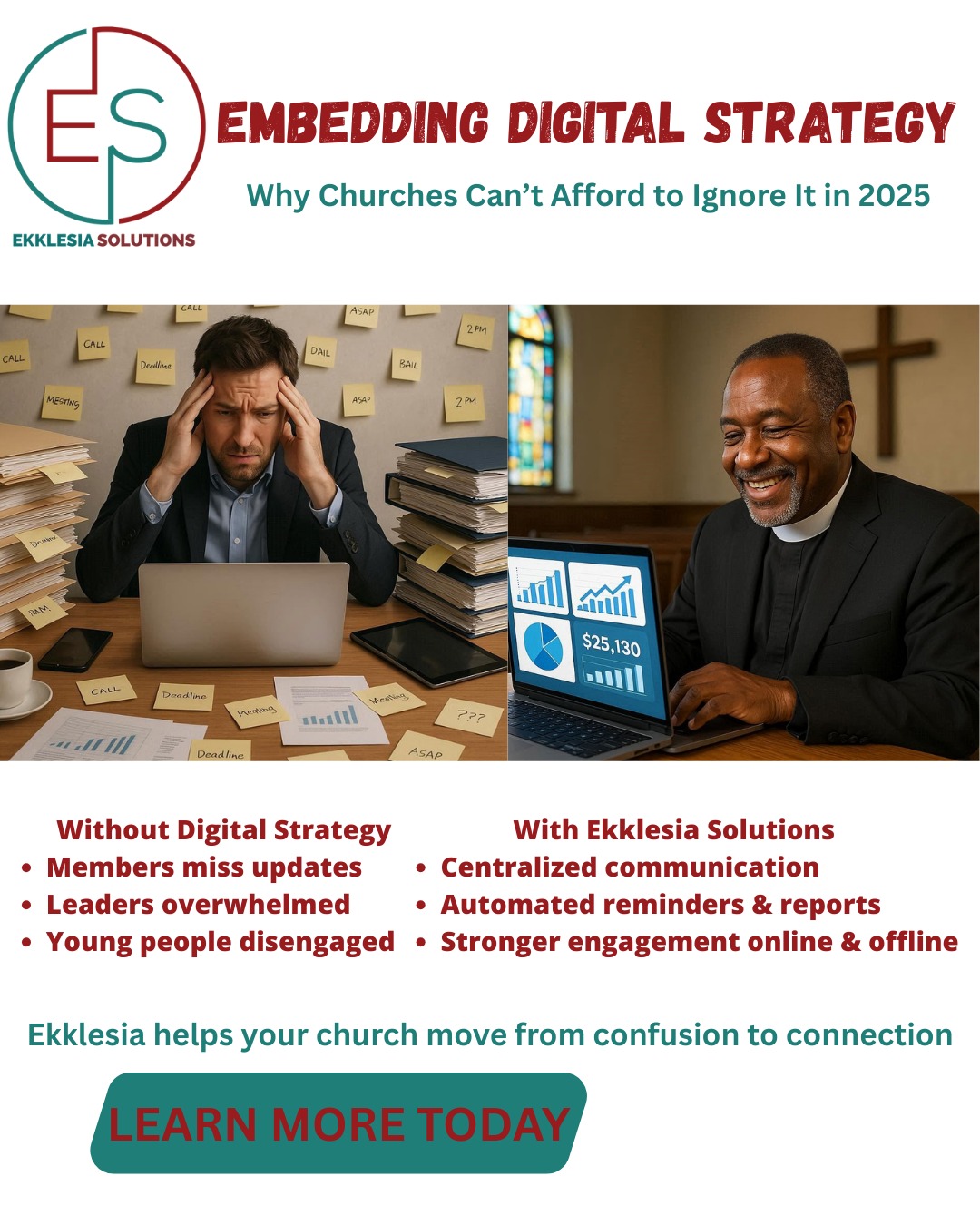The church is changing. What was once confined to Sunday mornings in a physical building has now expanded into the digital world. In 2025, churches are streaming services, posting devotionals online, running WhatsApp groups, and connecting with members through apps and websites. Yet, despite these efforts, many churches continue to struggle. Why? Because they don’t have a cohesive digital strategy. Instead of a unified plan, they rely on scattered social media updates, inconsistent livestreams, or last-minute announcements that never reach everyone. The result? Missed opportunities, disengaged members, and a church that feels disconnected from modern life.
The Cost of Having No Digital Strategy:-Low Member Engagement
When updates are scattered across multiple channels without consistency, members often miss critical information. They may not know when events are happening, how to register, or how to stay connected throughout the week.
Younger Generations Tune Out:-
Gen Z and Millennials live online. If a church has little or no digital presence, worse, a confusing one, it risks losing an entire generation that sees technology as essential to community.
Burnout for Church Leaders:-
Without proper systems, pastors and admins end up spending countless hours chasing updates, resending reminders, and manually managing communication. What should be simple becomes overwhelming.
The digital space is one of the biggest mission fields today. Churches without a digital strategy miss the chance to reach seekers scrolling on Instagram, YouTube, or TikTokpeople who may never walk through the doors of a building at first.
What an Effective Digital Strategy Looks Like
A strong digital strategy for churches goes beyond livestreaming sermons. It means:
Centralized Communication: A single platform where members can receive updates, reminders, and resources.
Consistent Content Creation: Weekly devotionals, event announcements, and testimonies shared in a structured way.
Online Engagement Tools: Features like polls, prayer request forms, or digital giving options that encourage participation.
Analytics & Tracking: Knowing who is engaging, giving, or dropping so the church can respond with care and intention.
When churches embed digital strategy into their DNA, they stop playing catch-up and start leading with clarity.
How Ekklesia Solutions Bridges the Gap
This is where Ekklesia Solutions steps in. Designed specifically for churches, it provides the tools to take digital ministry from fragmented to flourishing:
Unified Communication Hub:- Members get updates via SMS, email, or app notifications, ensuring no one is left out.
Data-Driven Insights:- Track attendance, giving, and engagement trends in one dashboard.
Automation:- Event reminders, follow-ups, and reports are generated instantly, saving pastors and admins hours each week.
Safe & Secure Systems:- From child check-ins to online giving, Ekklesia ensures trust and security.
Digital-First Outreach:- Tools to connect with both in-person attendees and the growing online community.
With Ekklesia, your church doesn’t just “use technology,” it harnesses it with purpose.
In today’s world, embedding a digital strategy isn’t optional’s mission-critical. Churches that fail to adapt risk losing members, disengaging younger generations, and burning out their leaders. But with the right tools, churches can turn digital challenges into opportunities for growth, discipleship, and deeper connection. Ekklesia Solutions exists to make this possible. By simplifying church management and empowering digital engagement, it helps churches focus on what matters mostbuilding stronger communities and transforming lives.
Is your church ready to embed a digital strategy and thrive in 2025? With Ekklesia, you can.










